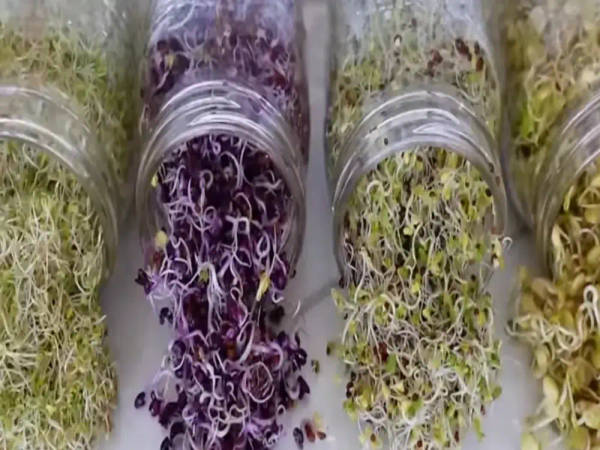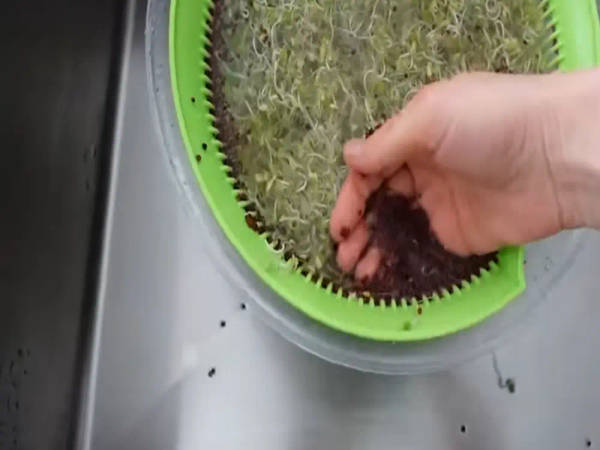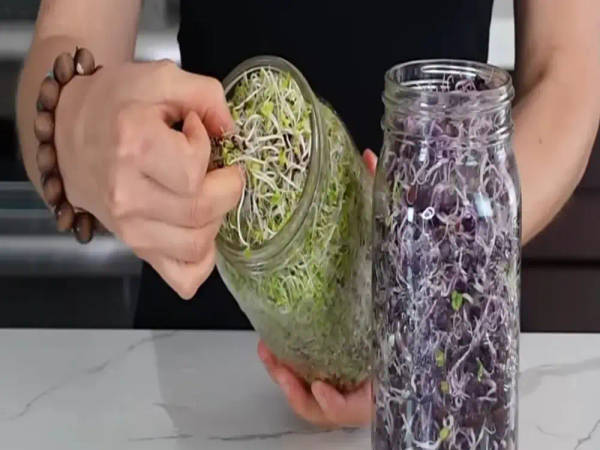How to grow sprouts from seeds at home?
Growing sprouts is like having a small garden in your kitchen. These tiny plants not only make your food tastier, but they are also a storehouse of nutrition. Want to get started growing sprouts? Then this guide is for you. We will focus on alfalfa sprouts, radish sprouts, lentil sprouts, and broccoli sprouts. These are the most common and easy to grow sprouts.What are sprouts and why are they so special?
Sprouts are small sprouted seeds that are full of nutrients. This can be understood by looking at the nutrition facts of sprouts—they are a treasure trove of vitamins, minerals, and fiber. Eating a handful of sprouts can be equivalent to eating several kilograms of green vegetables. The benefits of broccoli sprouts are even more amazing—they are rich in antioxidants.- Nutrition: Sprouts contain 20-30 times more nutrients, such as vitamin C, K, and folate.
- Digestion: The enzymes present in them make digestion easier.
- Protein: Sprouts are a high protein food, rich in amino acids.
Benefits of Growing Sprouts at Home
The benefits of growing sprouts are numerous. They are not only healthy, but also cheap and good for the environment. Let's take a look at some of the key benefits:- Cost effective: Organic sprouting seeds are available for just a few cents, and a teaspoon of seeds can yield a lot of sprouts.
- Freshness: Growing sprouts at home is refreshing in winters or in places where fresh vegetables are hard to find.
- Fun for kids: DIY sprouting is a fun project for kids. They get excited to see the magic of sprouts grow and look forward to eating them.
Materials required for growing sprouts
You don't need much to start this easy way of growing sprouts. These are the things you need:- Mason jar: A wide-mouth mason jar is best.
- Sprouting lid: This is a special mesh lid for jars. If not, cheesecloth and a rubber band will work as well.
- Organic sprouting seeds: I use alfalfa, radish, lentil, and broccoli seeds. These are easily available online
Step-by-Step Guide: How to Grow Sprouts at Home?
Now comes the most fun part—the process of growing sprouts from seeds at home. It's so easy that anyone can do it, even if you're a novice at growing sprouts.Step 1: Prepare the Seeds
- Put 2 tablespoons of radish sprouts seeds in one jar.
- Put 2 tablespoons of alfalfa sprouts in the second jar.
- Put ¼ cup of lentil sprouts in the third jar.
- Fill each jar with water. Half a jar for smaller seeds and a full jar for larger seeds (like lentils).
Step 2: Soak the Seeds
- Place a sprouting lid or cheesecloth on the jar.
- Soak the seeds for 8-12 hours. Broccoli sprouts only need to be soaked for 2-4 hours.
- Drain the water in the morning and rinse the seeds thoroughly.
Step 3: Wash and shake daily
- Wash the seeds twice a day (morning and evening).
- Gently shake the jar to spread out the seeds and give them breathing room.
Step 4: Be Patient
- Small seeds like alfalfa and radish will sprout in 4-5 days.
- Larger seeds like lentils will only take 3 days.
- If there is plenty of light, cover the jar with a cloth to help the sprouts germinate faster.
Step 5: Prepare and Store
- After 4-5 days, your sprouts will be ready. Wash them in a salad spinner or a regular container.
- Remove any empty seeds that float to the top. They are harmless to eat, but removing them makes the sprouts look cleaner.
- If you don't have a salad spinner, spread them out on a paper towel to dry for half an hour.
- Place them in an airtight container lined with paper towels and store in the fridge. Eat them within 4-5 days.
How to include sprouts in your diet?
There are so many ways to eat sprouts that you can try them in a new way every day. Here are some ideas:- Salads: Add alfalfa sprouts to salads with these recipes. They taste crunchy and fresh.
- Sandwiches: Give your sandwiches a spicy twist by adding radish sprouts.
- Smoothies: Blend broccoli sprouts into smoothies. They are a great alternative to protein powder.
- Snack: Just eat a handful of lentil sprouts on their own—delicious and healthy!
Growing Sprouts with Kids: A Fun Project
DIY sprouting for kids is a project that is not only fun but also educational. Children get excited watching the process of sprouts growing. This small experiment teaches them about nature and health.- Start: Let kids pick the seeds—broccoli or alfalfa are good choices.
- Responsibility: Give them the task of washing and shaking the jars every day.
- Fun: When the sprouts are ready, let kids add them to salads or sandwiches.
Growing sprouts at home in winter
It may be difficult to get fresh vegetables in winter, but growing sprouts at home in winter can bring greenery to your kitchen. These small plants grow easily even in cold weather.- Temperature: Keep the jar at normal room temperature.
- Light: No need for too much sunlight. Sprouts grow well even in dim light.
- Tips: If the roots look dry, wash them immediately. This is not mold, but asking for water.
Common mistakes and solutions in growing sprouts
Beginners often make minor mistakes when growing sprouts. Here are some solutions:- Mistake: Soaking the seeds in too much water. Solution: Add the right amount of water and drain it out on time.
- Mistake: Failing to dry the jars completely. Solution: Keep the jars upside down to allow the water to drain properly.
- Mistake: Adding too many seeds. Solution: Add the right amount (2 tablespoons of small seeds, ¼ cup of large seeds) to each jar.
FAQ: Common questions about growing sprouts
Question: Can I grow sprouts without a sprouting lid
Answer: Yes, you can grow seeds without a sprouting lid, it's easy. Just use cheesecloth and rubber bands.Question: What are the best seeds to grow sprouts at home?
Answer: The best seeds for sprouts are alfalfa, radish, lentil, and broccoli. They are easy to grow and are full of nutrients.Question: Can kids grow sprouts?
Answer: Absolutely! DIY sprouting for kids is a fun and educational project.Question: How long can sprouts be stored?
Answer: Up to 4-5 days in an airtight container in the fridge. Use paper towels to absorb moisture.Question: Can I grow sprouts in the winter?
Answer: Yes, it's easy to grow sprouts at home in the winter. Just keep the jar at room temperature.Conclusion:The magic of sprouts in your kitchen
When you look at your broccoli sprouts or radish sprouts after five days, you won’t believe that such a magic happened from such tiny seeds. These crunchy, fresh, and nutritious sprouts are a delight in every bite. You can also freeze them and use them in smoothies, but do not defrost them, or they will turn soggy.This easy way to grow sprouts not only makes your food tastier, but also brings a small garden to your kitchen. From kids to adults, everyone can be a part of the process. So, it’s your turn! Grab a mason jar, pick the best seeds for your favorite sprouts, and start this magical journey.
Let me know in the comments which sprouts you grew and how you liked the experience. If you liked this guide to growing sprouts at home, do share it with your friends





